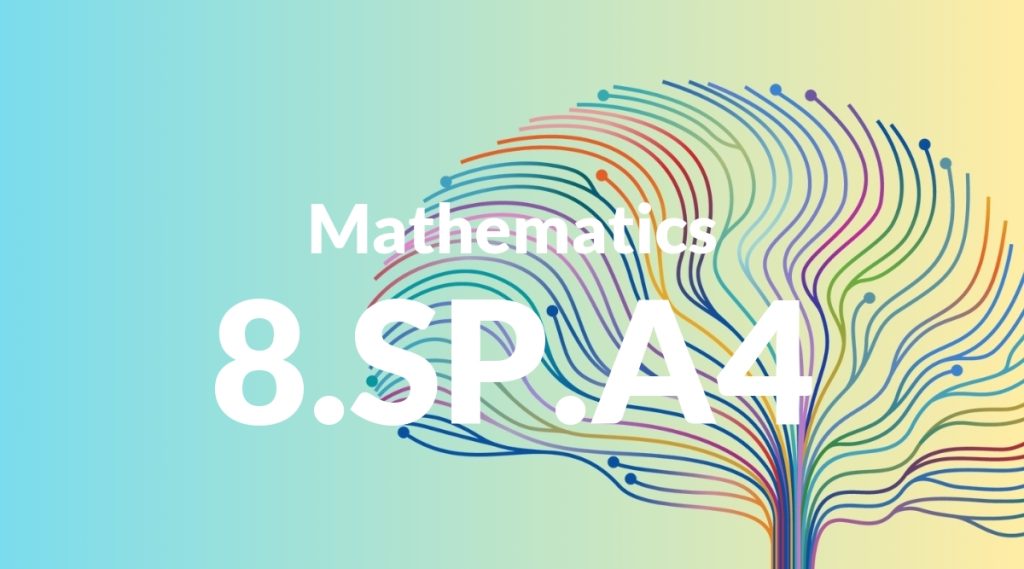Standard: 8.SP.A4 – Understand that patterns of association can also be seen in bivariate categorical data by displaying frequencies and relative frequencies in a two-way table. Construct and interpret a two-way table summarizing data on two categorical variables collected from the same subjects. Use relative frequencies calculated for rows or columns to describe possible association between the two variables. For example, collect data from students in your class on whether or not they have a curfew on school nights and whether or not they have assigned chores at home. Is there evidence that those who have a curfew also tend to have chores?
Grade level: Grade 8
Subject: Mathematics
Domain: Statistics & Probability
Teacher Overview
This standard focuses on understanding and interpreting patterns of association in bivariate categorical data. It is crucial for students to learn how to construct and analyze two-way tables, as this skill is foundational for more advanced statistical analysis. Mastering this standard will help students develop critical thinking and data interpretation skills. Students should have a solid grasp of basic frequency and relative frequency concepts, as well as experience with simple data tables and variable organization.
Mastering this standard will prepare students for more complex data analysis, including scatter plots, linear relationships, and correlation coefficients.
Common Misconception 1
A common misconception is that students often confuse absolute frequencies with relative frequencies. This confusion can lead to incorrect data interpretation and analysis.
Intervention 1
Use visual aids and hands-on activities to clearly differentiate between absolute and relative frequencies. Emphasize the importance of context in interpreting data to help students understand the distinction.
Common Misconception 2
Another misconception is that students might believe a high relative frequency always indicates a strong association between variables. This can lead to oversimplified conclusions.
Intervention 2
Teach students to consider the overall data set and other possible influencing factors, not just the relative frequency, when determining associations. Use real-world examples to illustrate this point.
Prerequisite Knowledge
Students should understand basic concepts of frequency, relative frequency, and the construction of simple data tables. They should also be familiar with the idea of variables and how to collect and organize data.
Subsequent Knowledge
After mastering this standard, students will be able to analyze more complex data sets, understand and interpret scatter plots, and delve into linear relationships and correlation coefficients.
Instructional Activities
- Create a two-way table using class survey data on curfew and chores.
- Analyze the relationship between two categorical variables using relative frequencies.
- Interpret two-way tables from real-world data sets.
- Discuss the implications of data associations in various contexts.




